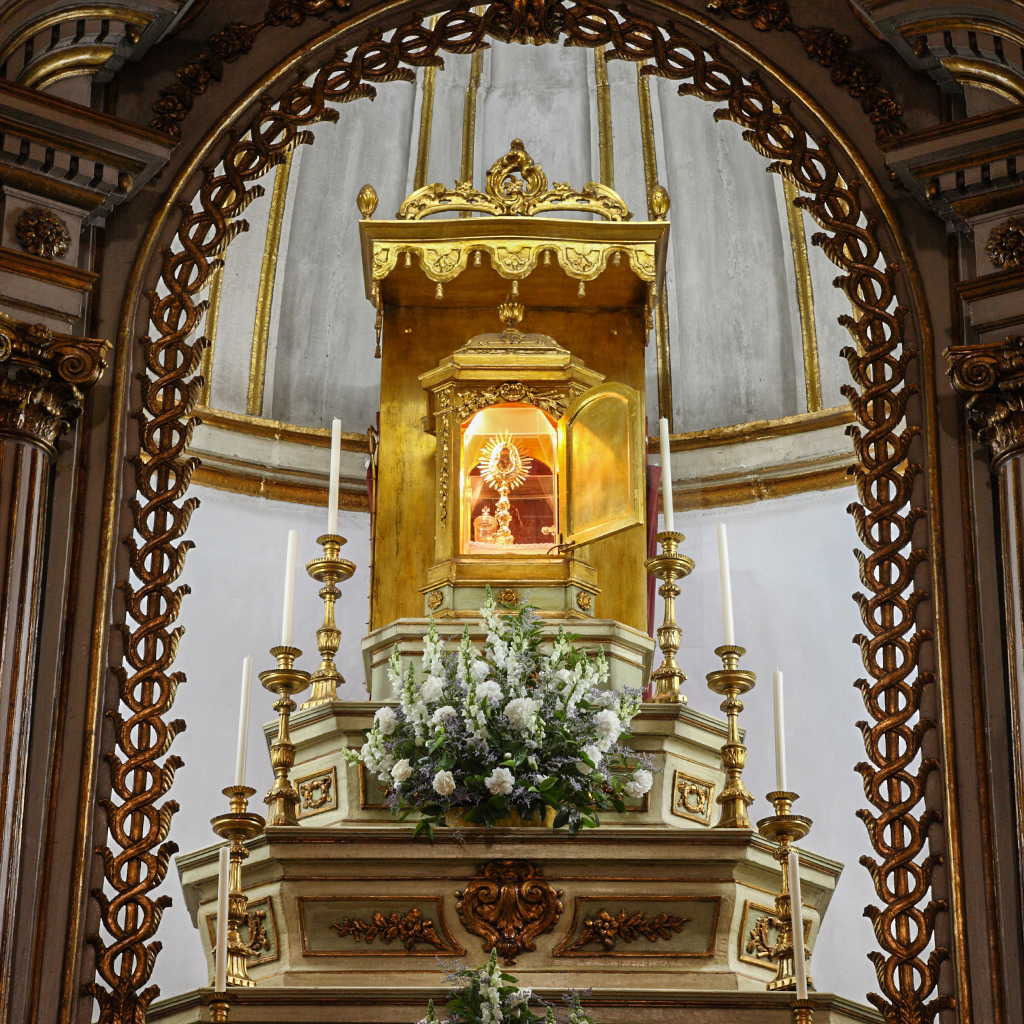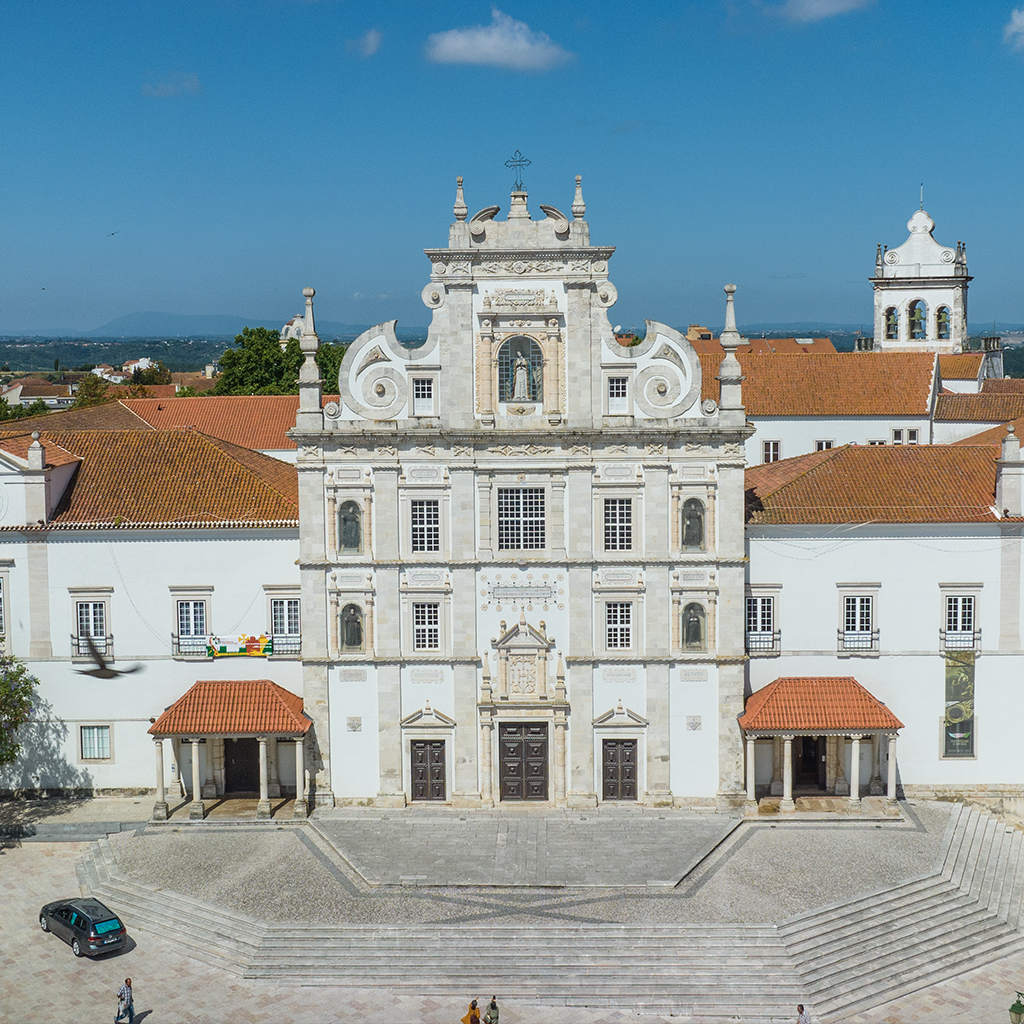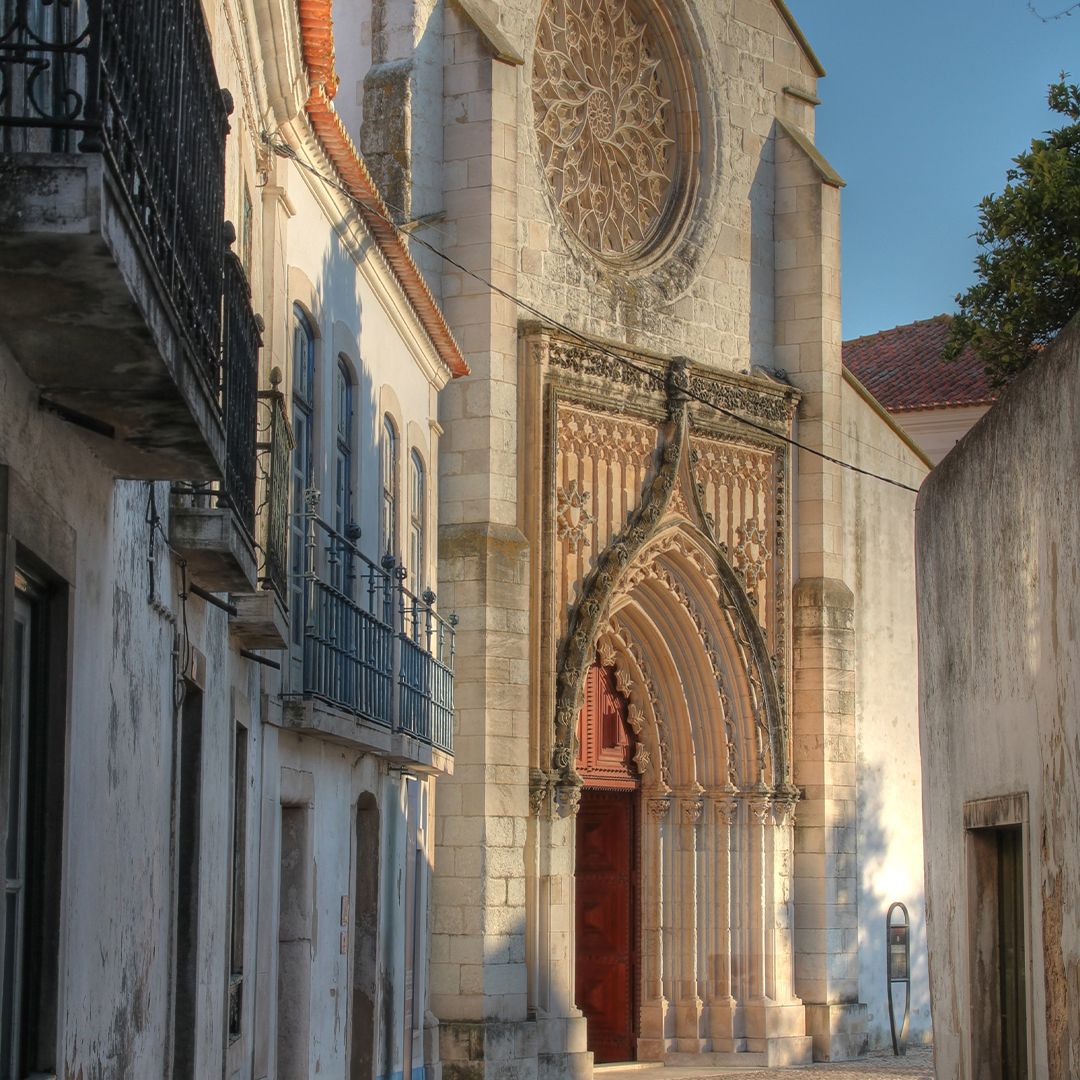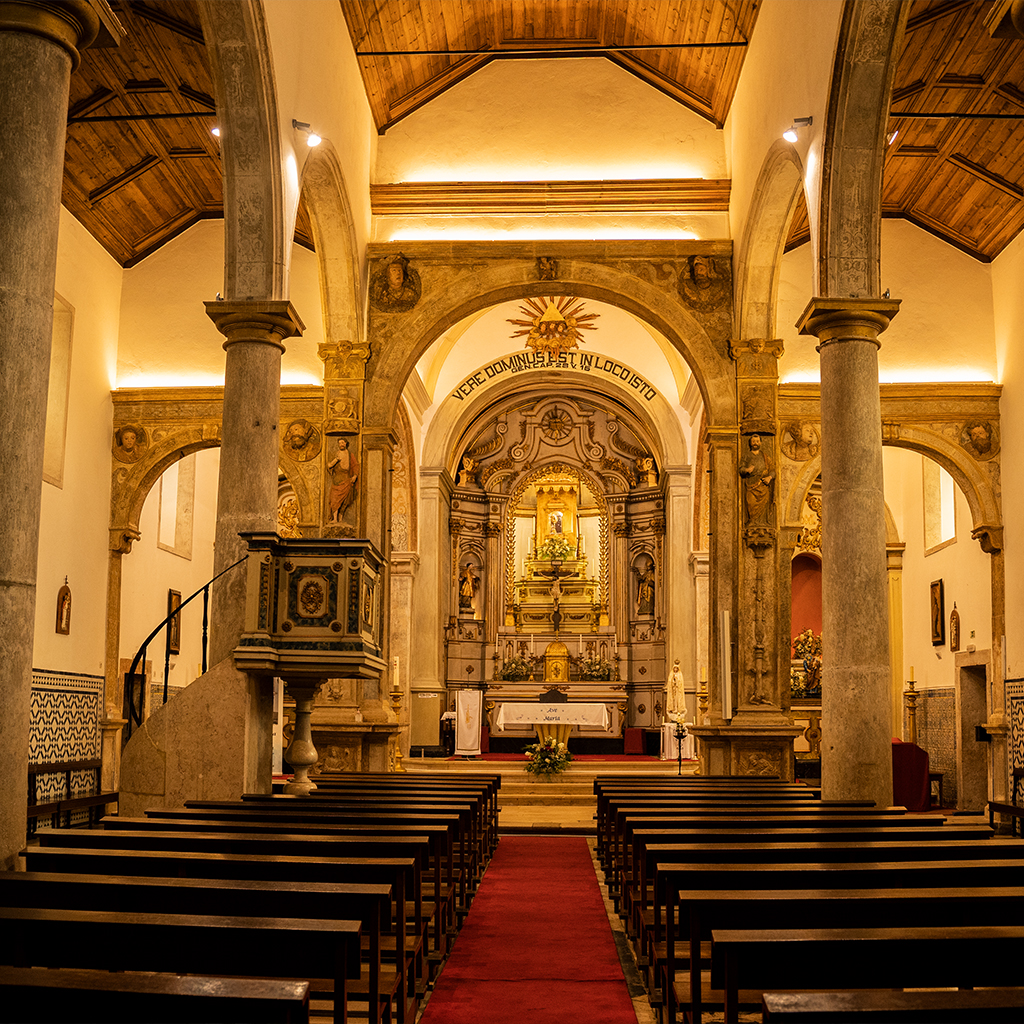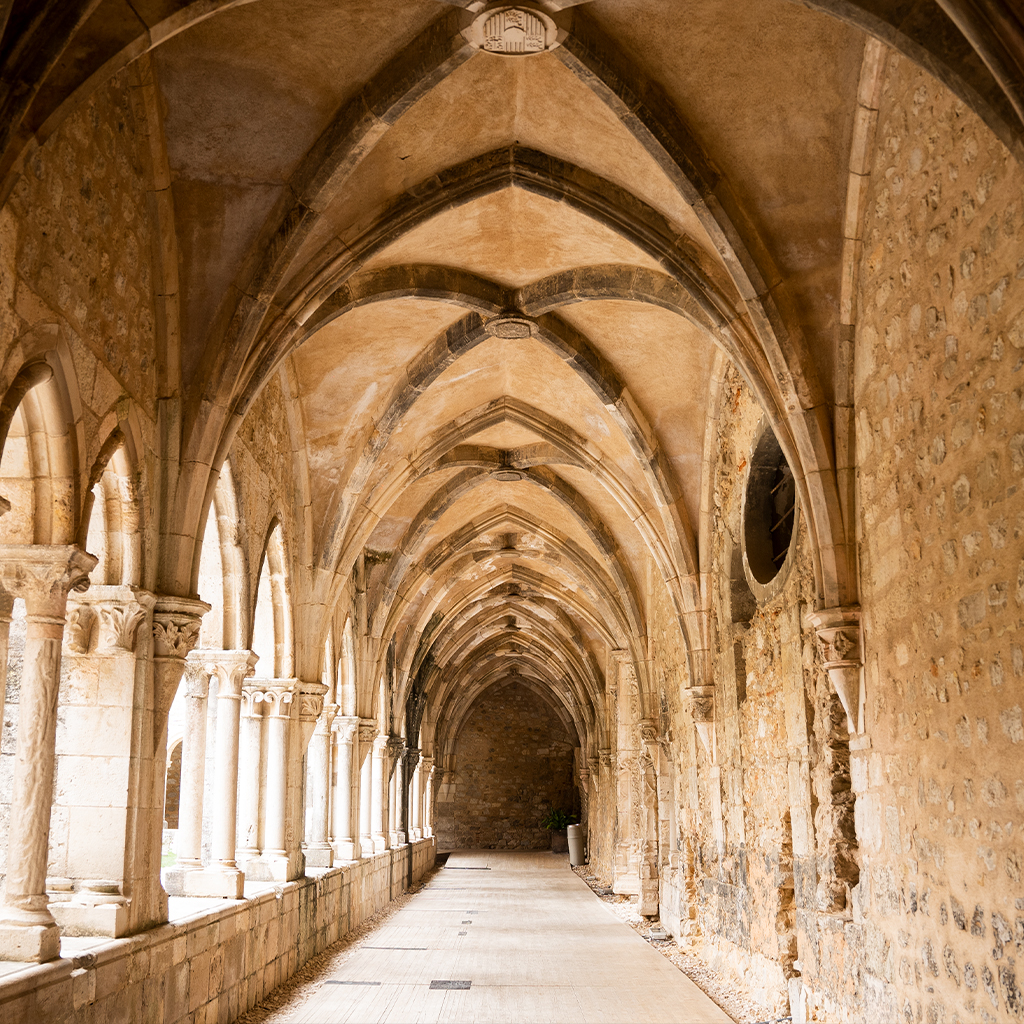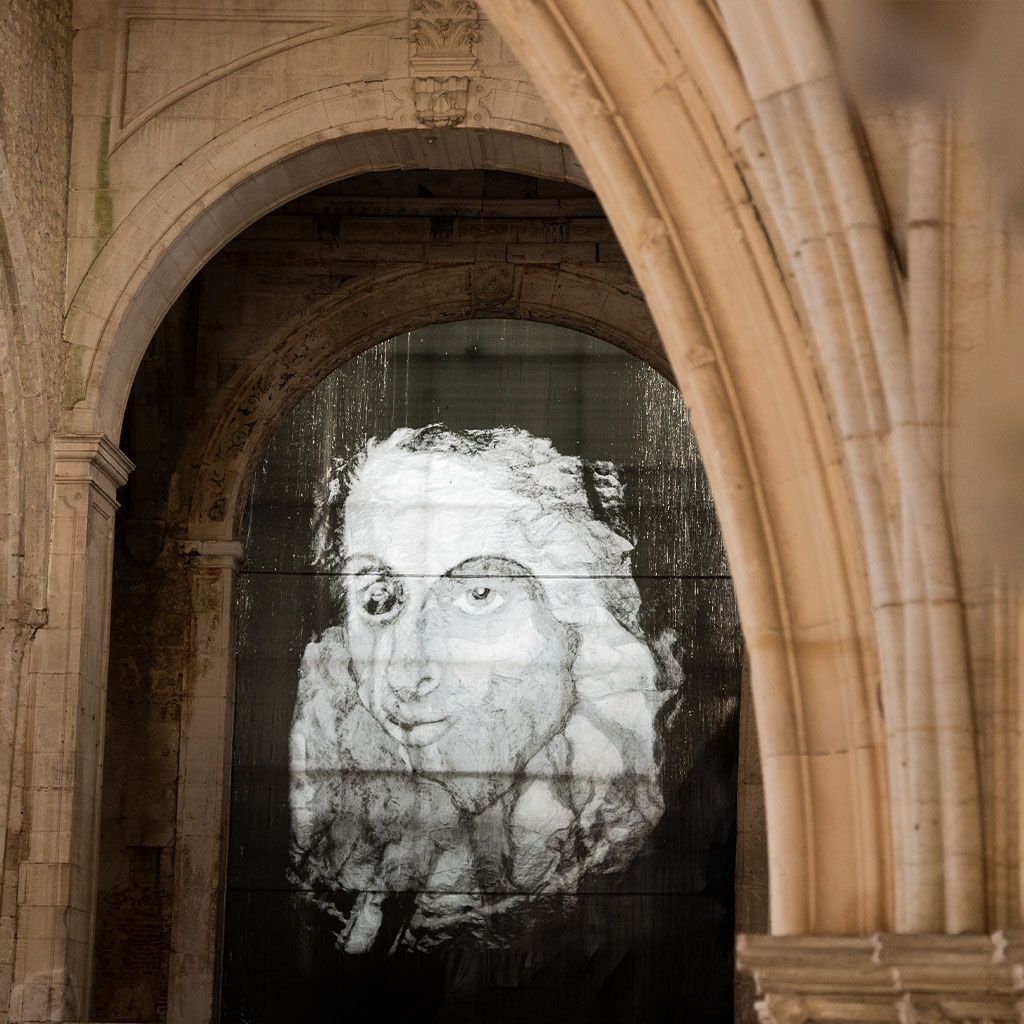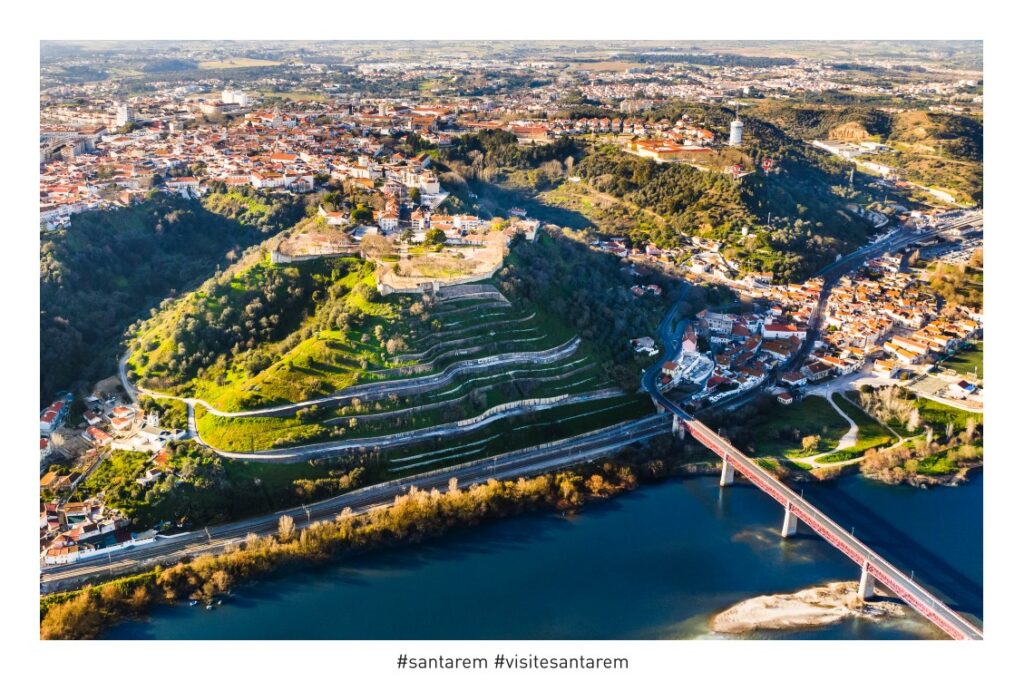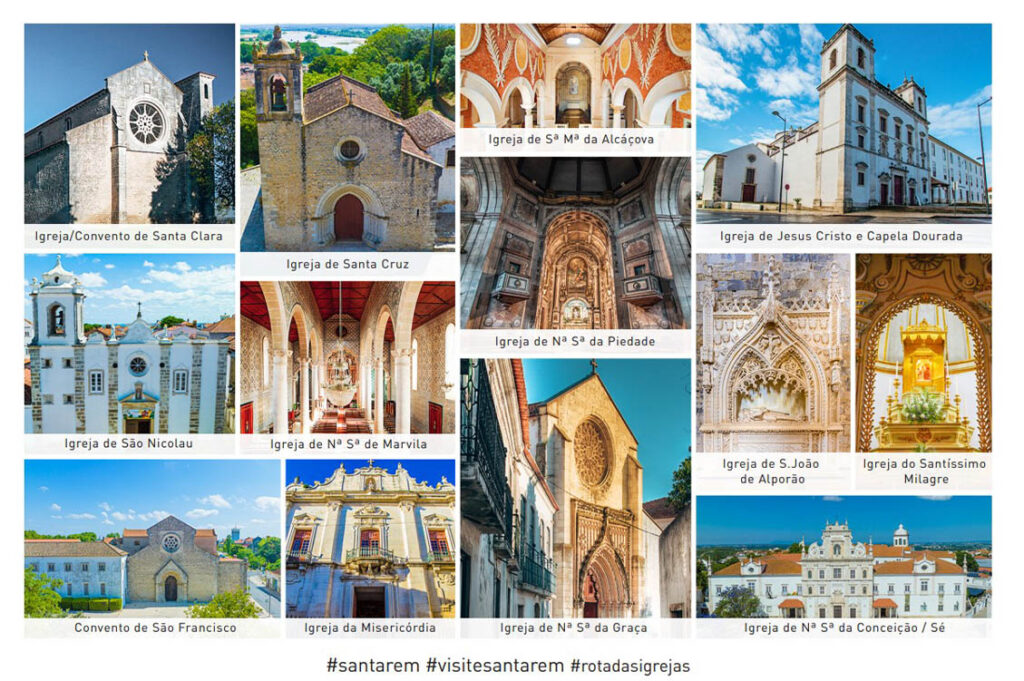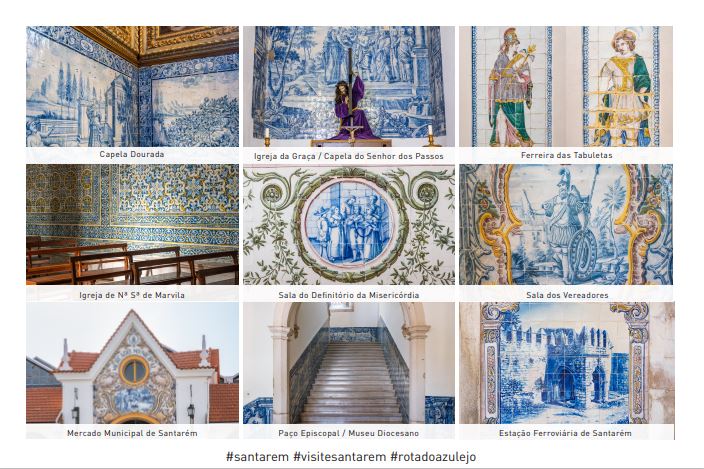
- PROMOTIONAL VIDEO
As one of the oldest regions in Portugal, Santarém has a number of monuments that mark Portuguese history and make this region one of the richest in terms of heritage. Discover a series of monuments that bear witness to the past and present of the land of Santarém, through the stories and memories that each one holds.
- Santíssimo Milagre Church
- Santíssimo Milagre Church
Summer
10H -13H:30 | 14H:30-19H
Winter
9H - 13H:30 | 14H:30-18H
The Santíssimo Milagre Church was founded in the 13th century and is also known as Santo Estevão Church (in honor of the first martyr of Christianity in the 12th century). The Church is located in the historic center of the city of Santarém, and acquired its current, mostly Renaissance look in the 16th century.
The Church is known as Santuário of Santíssimo Milagre de Santarém after the occurrence of a famous miracle in 1226, in the parish that had it as its seat at the time, and has hosted the holy relics ever since.
The current configuration of the Church is the result of a rebuilding campaign from the 1500’s, carried out between 1536 and 1547, and which was motivated by the extent of the damage caused by the Earthquake of 1531.
This intervention was followed by others, later, in the seventeenth and eighteenth centuries, which resulted in the coating of polychrome tiles, the choir and the altarpieces of gilded woodcarving, from the first half of the eighteenth century. Since its foundation, this Catholic Temple hosted the headquarters of the parish of Santo Estêvão, one of the most important and wealthy of the then town of Santarém. Currently, this church is the destination of many pilgrimages, specifically associated with Eucharistic devotion.
- Santarém Cathedral / Diocesan Museum
- Santarém Cathedral and Diocesan Museum
The Cathedral of Santarém, also known as the Church of Nossa Senhora da Conceição do Colégio dos Jesuítas or the Seminary Church, is located in the historic center of the city of Santarém, in Praça Sá da Bandeira. The church was built in the 17th century by order of King João IV and has been classified as a National Monument since 1917.
The church was elevated to the distinguished role of Cathedral and Episcopal Palace of the Diocese of Santarem in 1975, when the diocese was created.
Linked to the Cathedral, the Santarém Diocesan Museum is an important sacred art museum located in the city of Santarém. The museum is housed in the former Jesuit College, a 17th century building that has been adapted to house the museum’s collections.
The collection of the Diocesan Museum of Santarém is made up of a wide variety of religious objects, including paintings, sculptures, furniture, goldsmithery and textiles. Many of the works date back to the 15th and 16th centuries, a period of great artistic and religious wealth in Portugal.
Among the museum’s most notable works are paintings by Grão Vasco, one of the greatest artists of the Portuguese Renaissance.
The museum is an important center for the research and conservation of sacred art in Portugal and regularly promotes temporary exhibitions and other cultural activities for the local community and visitors. A visit to the Diocesan Museum of Santarém is an enriching experience for those interested in history, art and religious culture.
- Santarém Municipal Market
- Santarém Municipal Market
Dating from 1930 and designed by the architect Cassiano Branco (1897-1970), it replaced the open-air market that had survived for centuries in Praça Visconde Serra do Pilar, known as Praça Velha. It is an example of iron architecture combined with a cultural historical model, giving it a “slight chalet air”.
Classified as a Property of Public Interest in 2012, the Municipal Market proudly displays a valuable collection of naturalistic tiles depicting the Ribatejo, laid between 1932 and 1936 and from the Sacavém Crockery Factory. On its walls, tile art proudly depicts the city’s heritage and monuments, national landmarks, representations of agricultural work and various experiences of the people of Escalabia and the daily life of the Ribatejo region at the beginning of the 20th century. Beginning in the summer of 2019, a series of refurbishment works at the Santarém Municipal Market will preserve and revitalize this landmark of the city’s tile heritage.
- The Church of Nossa Senhora de Marvila
- The Church of Nossa Senhora de Marvila
The Church of Nossa Senhora de Marvila is located in the historic center, next to the square formerly known as Praça Nova, where the Town Hall was located in the Middle Ages. This 12th century church (the church is probably the result of the refounding of an old mosque in the Islamic medina of Santarém, dating back to the time of the Christian reconquest) belongs to one of the oldest parishes in the city, having played an important religious role during the Middle Ages. According to tradition, the church owes its name to an image of Our Lady of Wonders, offered by Saint Bernard and donated to the Templars by King Afonso Henriques.
The church is a beautiful example of the Manueline style in Santarém and in Portugal (the beautiful portico on the main façade stands out), and it never ceases to amaze us with its rich decorations in a variety of architectural styles. Inside, the 17th century tiles of various colors stand out, earning it the name “cathedral of 17th century tiles” in Portugal. In this way, this temple is a small museum of the history of Portuguese art. Not to be missed.
- Garden of the Gates of the Sun
- Garden of the Gates of the Sun
Now a panoramic balcony overlooking the Tagus and the extensive Lezíria, it is the visitor’s room and one of the most popular spaces in the city. It is home to the Urbi Scallabis – Interpretation Center, a structure that supports visitors’ knowledge and interpretation of the historic center. At this end of the Santarém plateau stood the ancient citadel of Alcáçova, a 12th century walled fortress with a sovereign residence inside.
This hill is flanked to the northeast by the Atamarma Valley and to the southwest by the Alfange Valley, where the Ribeira de Santarém and Alfange are located respectively. Due to its physiographic and geomorphological characteristics, this site is commonly known as a “limestone table with its feet in the River Tagus”, from where you have the best panoramic views of the lezíria and the Tagus, in all orientations.
Its dominant position gives us a privileged view of the hillside, allowing us to guess and understand the relationship between the plateau and the river, the relief and the vegetation, in the past, present and even the future.
In fact, the Portas do Sol Viewpoint and Garden make it possible to experience the entire lezíria, river and valleys with great wonder. Passing through the old gateway and sidewalk of Santiago, connecting to the hillside platform and crossing paths / streets with panoramic views over the natural and cultural landscape of Santarém, and the built heritage are must-sees for those who want to really get to know the history of this city and, with it, of Portugal.
- Church of Santa Maria da Graça
- Church of Santa Maria da Graça
The Church of Santa Maria da Graça, also known as Grace Church or Igreja de Santo Agostinho, is located in Largo Pedro Álvares Cabral (also known as “Largo da Graça”), in the heart of the historic center of the city of Santarém. Having secured the patronage of several important members of the Scalabite nobility, including the first Counts of Ourém, João Afonso Telo de Meneses and Guiomar de Vilalobos, the Augustine Fathers settled in Santarém in 1376 and work began on building the church in 1380, which was finally completed in the first quarter of the 15th century. During the 17th and 18th centuries, various decorations were made to the altars and chapels, including the beautiful paintings, the magnificent tile decoration on the side walls of the Chapel of Santa Rita, and the striking altarpieces.
The church is one of the city’s most emblematic monuments and one of the most important examples of Gothic art in the country. As the Pantheon of the Meneses family, Graça Church preserves important tombs of that family, making the church a unique example of the city’s artistic turmoil and giving it significant importance in the field of burial history, heraldry and epigraphy. This is also where the grave of the illustrious navigator Pedro Álvares Cabral is located.
- Tower of cabaças
- Tower of cabaças
The Tower of Cabaças, or Cabaceiro, or Clock Tower, is an ancient keep that forms part of the Castle of Santarém, located in the former parish of Marvila, and is classified as a Property of Public Interest by Decree of March 14, 1917. The charismatic Clock Tower is one of Santarém’s best-known and most emblematic architectural features, having once been the Clock Tower of the Senate Chamber.
The current Clock Tower dates back to the reign of King Manuel I (1495-1521) and thus dates from the 15th century. The Santarém Clock Tower, built in the 15th century, was built on top of a pre-existing defensive structure that surrounded the Alpram or Alporão Gate.
The popular name, Cabaceiro, was established at the end of the 18th century, deriving from the seven or eight clay gourds placed on the iron structure that supports the huge bronze bell cast in 1604, whose gourds help the sound of the hour strike resonate. The people jokingly identified these gourds with the “hollow” heads of their municipal councillors.
The various demolitions that took place on the medieval walls of Santarém throughout the 19th century destroyed a large part of its defensive perimeter. As for the vigilant defensive towers, most were dismembered by the Camartelo Camara, with the exception of the proud and robust Clock Tower of the Senate Chamber, which grew through successive additions over time.
It has now been refurbished as the “Núcleo Museológico do Tempo” (Museum Center of Time), part of the Santarém Municipal Museum, with a documentary exhibition.
- AQUATIC COMPLEX
- Aquatic Complex
More Information:
www.viversantarem.pt/
parqueaquatico/
- CONVENT OF SAINT FRANCISCO
- CONVENT OF SAint FRANCISCO
Wednesday to Sunday
9H-12H:30 | 14H:00-17H:30
Monday and Tuesday
Closed
The Convent of Saint Francisco was founded in 1242 by D. Sancho II when the Franciscans were established in the city of Santarém. The Convent is an outstanding example of the Portuguese Gothic style and has been classified as a National Monument since 1917.
The Convent has distinct artistic characteristics, many of them attributed to the famous royal architect Pedro Nunes Tinoco, namely the Manueline, Renaissance and Mannerist styles, as a result of the magnificent artistic interventions that it underwent over the centuries. The Convent was the favorite of King D. Fernando and King D. João II and continued to be the residence of most of the Families of the Country’s High Nobility for several centuries. Its status and historical and social importance is unmatched to this day, both locally and nationally.
On June l, 1992, it became part of the Portuguese Institute for Architectural Heritage and, in 1999, it became the target of impressive restoration and patrimonial valorization. On August 24, 2009, the convent passed into the hands of the Regional Directorate of Culture of Lisbon and Tagus Valley and continues to be the target of careful restoration interventions.
- MISERICÓRDIA CHURCH OF SANTARÉM
- MISERICÓRDIA CHURCH OF SANTARÉM
Monday and Tuesday
Closed
Wednesday to Sunday
9H-12H:30 | 14H-17H:30
The Misericórdia Church of Santarém, also known as the Church of Our Lady of the Visitation, is located in the historic center of Santarém, more specifically on Rua Primeiro de Dezembro.
The church was designed in 1559 by the royal architect Miguel Arruda, one of the most important architects of the time in Portugal. The works were directed by the masters Simão Fernandes and Álvaro Freire. In 1603, the Brotherhood of Mercy of Santarém officially established its headquarters in the building next to the church.
Inside the church is one of the most impressive architectural and artistic spaces in Santarém. Of particular note are the paintings “O Repouso da Fuga para o Egipto” by André Morales and “O Pentecostes” by Pedro Alexandrino, which are on the walls of the naves, and the row of tiles that runs through the Consistory Room with fantastic plant and decorative motifs in olive green and manganese purple, centered by round blue cards on a white background, representing the Works of Mercy, illustrated with scenes from everyday life.
The church and the adjoining building housed the headquarters of the Santa Casa da Misericórdia until it was transferred to the Convento de Nossa Senhora de Jesus do Sítio. Both have been classified as National Monuments since 1922.
- LOCATION
Town Hall: 243 304 200
(Call to the national fixed network)
Tourist Office: 243 304 437
(Call to the national fixed network)
GNR: 243 300 091
(Call to the national fixed network)
Volunteer Firefighters: 243 377 900
(Call to the national fixed network)
2 – Santarém Cathedral and Diocesan Museum
3 – SANTARÉM MUNICIPAL MARKET
5 – GARDEN OF THE GATES OF THE SUN
6 – Church of Santa Maria da Graça
8 – AQUATIC COMPLEX
9 – CONVENT OF SAiNt FRANCISCO
10 – MISERICÓRDIA CHURCH OF SANTARÉM
- other postcards
